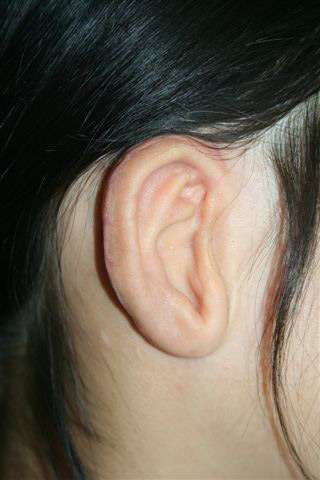At Dr Tayyab saleem malik clinic (Cosmetic Enclave)
Microtia is a congenital condition characterized by underdevelopment or absence of the external ear. It is typically present at birth and can affect one or both ears. Microtia can vary in severity, ranging from a small, malformed ear to a complete absence of the ear structure.
Ear reconstruction, also known as microtia reconstruction or auricular reconstruction, is a surgical procedure aimed at creating a new external ear for individuals with microtia. The goal of the procedure is to improve the appearance of the ear, restore symmetry, and enhance overall facial harmony.
There are different surgical techniques used for ear reconstruction, and the choice of technique depends on the severity of microtia and the patient’s individual circumstances. The two primary approaches are autologous reconstruction and prosthetic reconstruction.
Autologous reconstruction involves using the patient’s own tissue to create a new ear. This often involves taking rib cartilage from the patient’s chest and sculpting it into the shape of an ear framework. The framework is then implanted beneath the skin in the area where the ear should be. Over time, the skin and tissue integrate with the framework, creating a more natural-looking ear. Additional procedures may be performed to refine the shape and position of the ear and create an ear canal.
Prosthetic reconstruction involves using a custom-made external ear prosthesis to simulate the appearance of a natural ear. The prosthesis is typically made from silicone and is attached to the patient’s head using medical-grade adhesives. Prosthetic reconstruction may be a suitable option for individuals with more severe microtia or those who are not candidates for autologous reconstruction.
The specific approach to ear reconstruction will depend on the individual’s age, anatomy, preferences, and medical considerations. It is important to consult with a qualified plastic surgeon experienced in ear reconstruction to discuss the options and determine the most appropriate course of treatment.
Ear reconstruction is often performed in multiple stages over a period of several months or years, allowing for proper healing and optimal results. It is important to have realistic expectations, as the outcome of the procedure may not perfectly replicate a natural ear, but can significantly improve the appearance and function of the ear.
Emotional support and counseling are essential components of the treatment process, particularly for children with microtia. Addressing any self-esteem or body image concerns can contribute to a more positive overall experience.
Overall, ear reconstruction offers individuals with microtia the opportunity to improve the aesthetics and symmetry of their ears, enhancing their self-confidence and quality of life. With advancements in surgical techniques and personalized approaches, ear reconstruction continues to provide promising outcomes for individuals with microtia.

